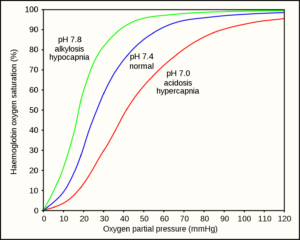
You grab an arterial blood gas, but the numbers aren’t matching the clinical picture. Here’s a quick checklist:
The sample: Clean stick? Flash? Pulsed as it self-filled? Looked arterial (red)? Exposure to room air (air bubbles, loose cap, etc,) can falsely ↓PCO2 and ↑PO2.
The CO2: If the PaO2 is scary low, the PaCO2 will likely be low too from hyperventilating unless the patient hasn’t had time or can’t.
The SaO2: How does it compare to the pulse-ox (SpO2)? Although the pulse-ox is referred to as a random number generator, the SpO2 should still be in the ballpark of SaO2.

Venous admixture: Veins sit next to arteries, so accidental venous sampling is possible. Realize that if 10% of your sample is venous blood, the PaO2 drops by ~25%.
Still in doubt? Grab a venous sample and compare results. Other considerations include machine error and delay in sample running.
Peer reviewed by gerks
Leave a Reply